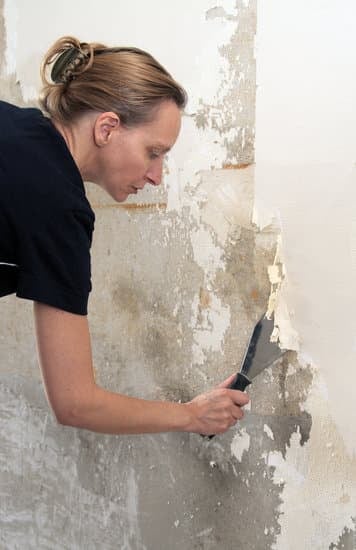How can we improve nursing homes to provide better care and support to our elderly population? The current state of nursing homes often falls short of providing the quality of care and living conditions that residents deserve.
This article will explore the various aspects that need improvement in nursing homes, including staffing issues, resident care, facility conditions, accountability, resident engagement, family involvement, and the use of technology. By addressing these areas, we can work towards creating a more positive and supportive environment for nursing home residents.
One of the key aspects that require attention in nursing homes is staffing. Adequate and well-trained staff are essential for providing quality care to residents. Additionally, improving facility conditions is crucial in creating a safe and comfortable environment for residents. With better oversight and regulation, as well as increased family involvement in the care process, we can promote a more engaging and supportive atmosphere in nursing homes.
By implementing improvements in these areas, we can enhance the overall quality of life for nursing home residents. Through this article, we will delve into each aspect in detail to understand how changes can lead to positive outcomes for both residents and their families. Let’s explore how we can work towards making tangible improvements in nursing homes for the benefit of all those involved.
Addressing Staffing Issues
Current Challenges and Impacts
One of the most pressing issues within nursing homes is the inadequacy of staffing. Understaffing can lead to a range of problems such as increased stress, burnout, and decreased morale among staff members, which ultimately affects the quality of care provided to residents.
Additionally, shortages in staffing can result in compromised safety and prolonged response times for residents in need of assistance. This not only impacts the well-being of residents but also contributes to a higher turnover rate among employees.
Strategies for Improvement
To improve nursing homes, it is crucial to address staffing issues effectively. This can be achieved by implementing strategies such as increasing recruitment efforts to attract more qualified personnel, offering competitive compensation and benefits packages to retain current staff, and providing ongoing training and education to ensure that employees are equipped with the necessary skills and knowledge.
Moreover, establishing proper staffing ratios based on the acuity level of residents can help ensure that each individual receives sufficient attention and care from staff members.
Creating a Supportive Work Environment
In addition to addressing the quantity of staff, it is equally important to focus on their quality by creating a supportive work environment. This includes fostering open communication channels between management and employees, promoting teamwork and collaboration among staff members, and acknowledging their hard work and dedication. By prioritizing the well-being of nursing home staff, it becomes possible to enhance the overall quality of care provided to residents while also improving retention rates within the facility.
Enhancing Resident Care
Improving the quality of care provided to residents in nursing homes is a critical aspect of overall improvement in these facilities. One important way to enhance resident care is by ensuring that the staff members are well-trained and equipped to meet the diverse needs of the residents. Adequate training not only leads to better medical care but also helps staff members understand and address the emotional and social needs of the residents.
Additionally, promoting a person-centered approach to care can significantly improve the quality of life for nursing home residents. This involves tailoring care plans to individual preferences, abilities, and interests. By focusing on the unique needs of each resident, nursing homes can provide more personalized and compassionate care.
Furthermore, creating opportunities for meaningful social interaction and engagement can greatly impact the well-being of residents. Activities such as art therapy, music programs, and intergenerational initiatives have been shown to enhance mental and emotional health among nursing home residents. Implementing these types of activities can significantly improve the overall quality of life for residents.
| Aspect | Impact |
|---|---|
| Staff Training | Better medical care and addressing emotional needs |
| Person-Centered Approach | Personalized and compassionate care |
| Social Interaction and Engagement | Enhanced mental and emotional health among residents |
By focusing on these aspects, nursing homes can significantly improve the quality of care provided to their residents while also enhancing their overall well-being. The implementation of person-centered care practices, investing in staff training, and prioritizing meaningful social engagement are crucial steps towards improving resident care in nursing homes.
Improving Facility Conditions
Nursing homes play a crucial role in providing care for elderly and vulnerable individuals who may require assistance with daily activities and medical needs. However, the current state of many nursing home facilities often falls short of providing a safe and comfortable environment for residents. As we consider how we can improve nursing homes, it is essential to highlight the significance of creating an environment that promotes the well-being and dignity of the residents.
Upgrading Infrastructure and Amenities
One key aspect of improving facility conditions in nursing homes is through upgrading infrastructure and amenities. Many nursing homes are housed in buildings that may be outdated or have limited resources to support the diverse needs of their residents.
By investing in renovations and modernization, nursing homes can ensure that their facilities are conducive to providing high-quality care. This includes making necessary adjustments such as installing handrails, ramps, and elevators for accessibility, updating living spaces to be more comfortable and homelike, and creating outdoor areas for recreation and relaxation.
Ensuring Safety Measures
Another important consideration for improving facility conditions in nursing homes is ensuring safety measures are in place. This involves implementing protocols for emergency preparedness, securing the premises to prevent accidents or unauthorized access, and maintaining equipment and infrastructure to minimize risks. Additionally, proper sanitation practices should be upheld to prevent the spread of infections, which is especially crucial in a healthcare setting.
Prioritizing Comfort and Quality of Life
Creating a safe and comfortable environment also means prioritizing the comfort and quality of life for nursing home residents. This can be achieved by offering amenities such as communal spaces for socialization, private areas for quiet time or visits with family members, as well as access to recreational activities and entertainment options. Additionally, providing nutritious meals that cater to specific dietary needs contributes significantly to the overall well-being of residents.
By addressing these aspects of facility conditions within nursing homes, we can significantly enhance the living experience for residents while promoting their health and happiness. It is clear that prioritizing these improvements will play a crucial role in achieving better outcomes for those under the care of nursing home facilities.
Strengthening Accountability
Nursing homes play a crucial role in providing care for elderly and vulnerable individuals who require assistance with their daily activities and medical needs. However, there have been longstanding concerns about the lack of accountability and regulation within the nursing home industry, leading to instances of neglect, abuse, and substandard care. Strengthening accountability through better oversight and regulation is essential to address these issues and ensure the well-being of residents.
One of the key aspects of improving accountability in nursing homes is implementing stricter regulations and standards for facility operations. This includes regular inspections, evaluations, and audits to assess the quality of care provided, staff competence, facility conditions, and adherence to safety protocols. By establishing clear guidelines and holding nursing homes accountable for meeting these standards, it becomes possible to prevent lapses in care and maintain a higher level of quality across the industry.
In addition to regulatory measures, creating a transparent system for reporting complaints, concerns, or incidents within nursing homes is critical for strengthening accountability. Residents, their families, as well as staff members should have access to an effective reporting mechanism that allows them to raise issues without fear of retaliation. Furthermore, there should be established protocols for addressing and investigating reported incidents promptly to ensure that appropriate action is taken.
To further strengthen accountability in nursing homes, collaboration with relevant authorities such as government agencies, healthcare organizations, and advocacy groups is essential. These partnerships can lead to the development of comprehensive oversight programs, data sharing initiatives for monitoring performance metrics, and the implementation of best practices that promote a culture of accountability within nursing home facilities.
Overall, by focusing on improving oversight and regulation in nursing homes through stricter standards, transparent reporting mechanisms, and collaborative efforts with external stakeholders, we can create a more accountable environment where the well-being of residents is prioritized. This approach will contribute significantly to enhancing the overall quality of care provided while addressing systemic issues within the industry.
Promoting Resident Engagement
Nursing home residents often face challenges related to social isolation and lack of mental stimulation. As a result, promoting resident engagement is crucial in enhancing their overall well-being. Here are some strategies on how we can improve nursing homes by prioritizing activities and social interaction for residents:
- Organize group activities: Group activities such as arts and crafts, exercise classes, or book clubs can provide social interaction and mental stimulation for nursing home residents. By creating a schedule of diverse group activities, residents have the opportunity to interact with others and maintain a sense of community within the facility.
- Encourage family visits: Family involvement plays a significant role in promoting resident engagement. Nursing homes should establish open visiting hours and create welcoming spaces for families to spend quality time with their loved ones. Additionally, staff can facilitate family-centered events to strengthen relationships and promote social connections within the facility.
- Volunteer programs: Implementing volunteer programs where community members visit nursing homes to engage with residents can greatly enhance social interaction. Volunteers can lead discussions, organize games, or simply spend time chatting with individuals, providing meaningful interactions that contribute to the residents’ emotional well-being.
Enhancing Family Involvement
Families play a crucial role in the well-being of their loved ones in nursing homes. Involving families in the care and decision-making process can have significant benefits for residents, staff, and the overall environment of the facility. Family members can provide valuable insight into the preferences, routines, and histories of their loved ones, which can greatly enhance the quality of care provided.
When family members are actively involved in the care plan of their loved ones, it creates a collaborative approach to resident care. This involvement can lead to better communication between staff and family members, fostering trust and understanding. Additionally, having family members participate in care discussions and decisions can improve resident satisfaction and quality of life. By involving them in activities or meal planning, families can contribute to creating a more personalized and comfortable living environment for their loved ones.
Furthermore, involving families in the decision-making process for their loved ones’ care can also lead to greater transparency and accountability within nursing homes. When families are actively engaged, they can help identify potential issues or areas for improvement within the facility. Their input holds nursing homes accountable for providing high-quality care and ensuring that residents’ needs are being met effectively.
| Benefit | Description |
|---|---|
| Improved communication | Families can provide valuable insights into residents’ preferences and histories. |
| Enhanced resident satisfaction | Families’ active participation in care discussions can lead to improved quality of life for residents. |
| Transparency and accountability | Involving families helps identify potential issues within nursing homes and holds them accountable for providing high-quality care. |
Utilizing Technology
Nursing homes can greatly benefit from the utilization of technology in various aspects of their operations. By incorporating modern tools and systems, these facilities can improve communication, record-keeping, and overall care for their residents. Here are some ways in which technology can be effectively implemented to enhance the quality of services provided in nursing homes:
- Electronic Health Records (EHR): Implementing EHR systems can streamline the documentation and organization of resident health information, making it easily accessible to healthcare providers. This not only improves the efficiency of caregiving but also reduces the likelihood of errors in medical records.
- Communication platforms: Utilizing digital communication platforms such as secure messaging apps or telehealth technologies can facilitate better and more immediate communication among staff members, residents, and their families. This real-time connection can lead to improved coordination of care and timely responses to any concerns or inquiries.
- Assistive devices: Incorporating assistive technologies such as fall detection sensors, medication reminders, and mobility aids can enhance safety and independence for nursing home residents. These devices help in preventing accidents and providing necessary support for daily activities.
By embracing technological advancements, nursing homes have the potential to elevate the standard of care they offer. It is crucial for these facilities to recognize the value of integrating relevant technological solutions into their practices in order to promote better outcomes for their residents.
Implementing technology in nursing homes offers numerous benefits that contribute to higher levels of efficiency, accuracy, and resident satisfaction. Therefore, it is imperative for these facilities to prioritize the adoption and utilization of appropriate technological tools as part of their commitment to continuous improvement in care delivery.
Conclusion
In conclusion, the current state of nursing homes presents significant challenges that must be addressed in order to improve the quality of care provided to residents. Staffing issues, facility conditions, accountability, resident engagement, family involvement, and the use of technology all play a crucial role in shaping the overall experience for nursing home residents.
By focusing on these key areas, we can work towards creating an environment that prioritizes the well-being and comfort of those who call nursing homes their home.
One of the most important aspects of improving nursing homes is addressing staffing issues. Ensuring that there are an adequate number of well-trained staff members is essential for providing high-quality care to residents.
Additionally, creating a safe and comfortable facility environment and promoting resident engagement through activities and social interaction are equally vital. When families are involved in the care and decision-making process for their loved ones in nursing homes, it fosters a sense of community and support that can greatly enhance the overall experience for residents.
Furthermore, utilizing technology can greatly improve communication, record-keeping, and overall care in nursing homes. With better oversight and regulation, as well as an emphasis on continuous improvement in all areas of care provision, we can gradually elevate the standard of living for nursing home residents across the board.
By considering these key points and actively seeking ways to implement improvements at every level, we can ultimately create a brighter future for those in need of long-term care in nursing homes.
Frequently Asked Questions
How We Could Improve the Quality of Nursing Care?
We could improve the quality of nursing care by investing in ongoing training and education for nurses, ensuring they stay updated on the latest medical practices and technologies. Additionally, providing a supportive work environment and manageable nurse-to-patient ratios can also enhance the quality of care.
How Can You Improve Quality of Care in Long Term Care?
The quality of care in long term care facilities can be improved by implementing person-centered care approaches that prioritize the individual needs and preferences of residents. This means promoting autonomy, respecting dignity, and involving residents in their own care decisions. Additionally, regularly evaluating and improving processes to ensure safety and effectiveness is crucial.
How Can Nursing Practice Be Improved?
Nursing practice can be improved through the adoption of evidence-based practices, which involves using the best available research to guide clinical decision-making. Additionally, fostering a culture that values continuous improvement, collaboration among multidisciplinary teams, and effective communication can also enhance nursing practice.

I’m thrilled to have you here as a part of the Remodeling Top community. This is where my journey as an architect and remodeling enthusiast intersects with your passion for transforming houses into dream homes.





